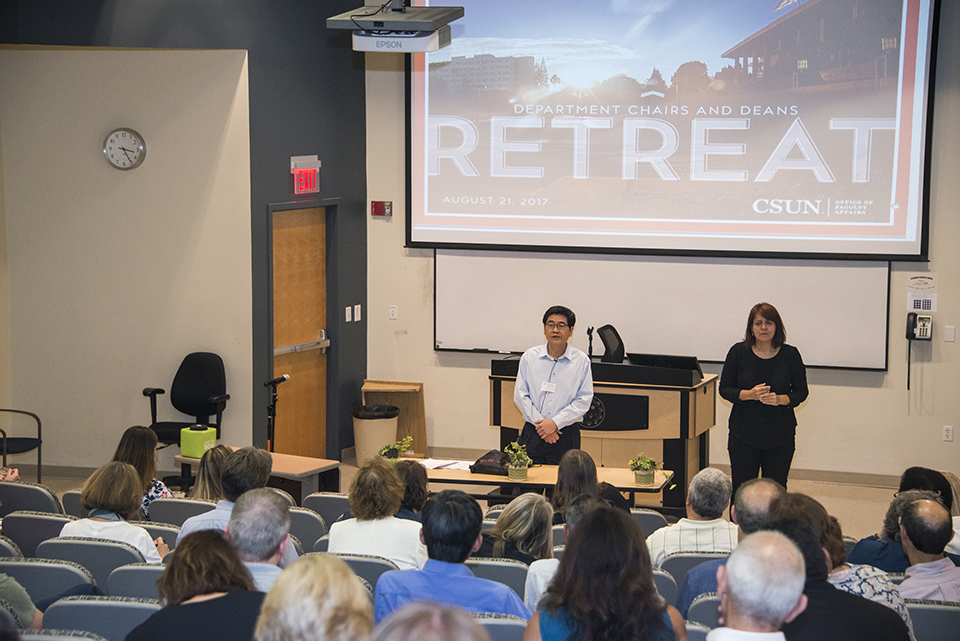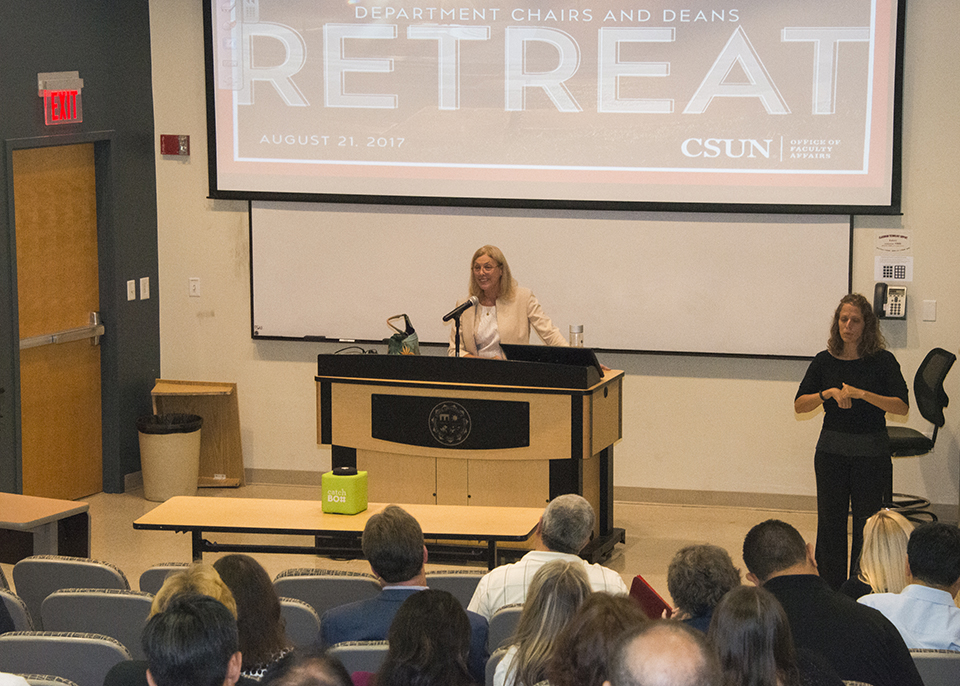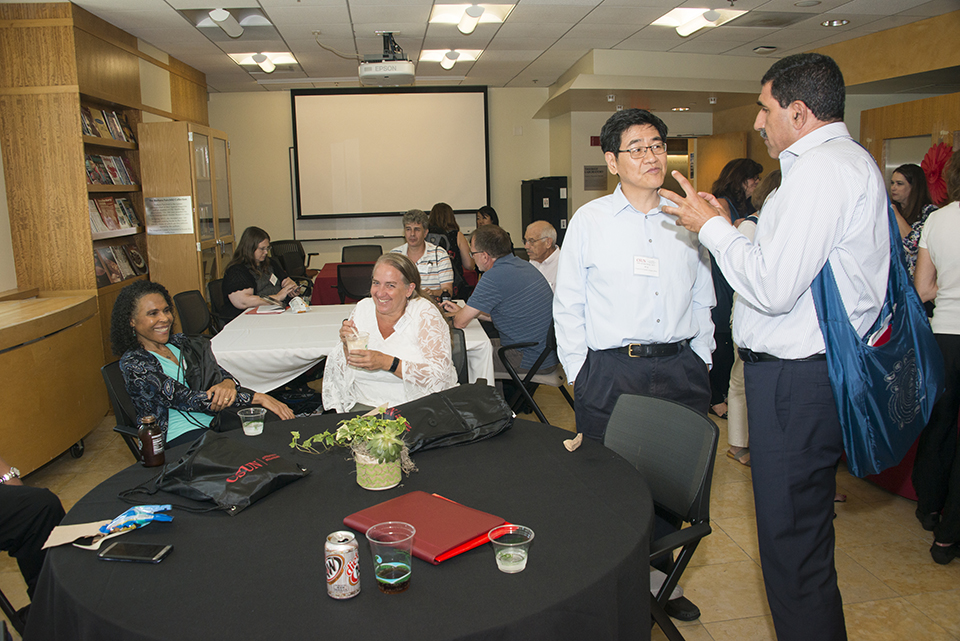Deans and Department Chairs Retreat Concentrates on Boosting Student Success
The focus of the California State University, Northridge 2017-18 academic year will be to build on the initial successes of “Matadors Rising,” the campuswide campaign to boost graduation rates.
This message was delivered by CSUN President Dianne F. Harrison and Provost Yi Li in separate talks Aug. 21 at the annual Department Chairs and Deans Retreat. More than 100 university leaders, including department chairs, associate deans and deans of CSUN’s nine colleges and library, and administrators, met in Nobbs Auditorium and other rooms in Sequoia Hall to prepare for the upcoming academic year.
At this same retreat one year ago, Harrison announced new goals for student success by the year 2025, set forth by the California State University (CSU) chancellor’s office and the CSU Board of Trustees. CSU’s Graduation Initiative 2025 is designed to raise retention and graduation rates and eliminate opportunity gaps systemwide.
CSUN has taken numerous steps to meet campus-specific goals, which include increasing four- and six-year freshman graduation rates by at least 16 percentage points and the two- and four-year transfer graduation rates by at least 10 percentage points by 2025.
CSUN is also working to eliminate the opportunity gap between traditionally underserved students — African-American, Latina/o and Native American — and their white and Asian-American counterparts, and between low-income and higher-income students. The university also has worked to highlight the benefits of taking 15 credits per semester or 30 per year to reduce time to graduation.
“I will say that so far in the past year, we’ve made demonstrable progress,” Harrison said. “We have invested strategically in the people and the systems to help us meet these goals.”
Early results are encouraging, Harrison said, even as they illustrate the challenges at hand:
- Four-year graduation rates for first-time freshmen have increased by an estimated 1 percentage point
- Two-year graduation rates for transfer students have increased by approximately 3 percentage points
- Average credit loads for freshmen and sophomores have increased to more than 13 units
Harrison, who kicked off the retreat with an opening address, and Li, who provided closing remarks, did not downplay the challenge in helping an increasing number of students complete degrees in targeted timeframes. But university officials outlined concrete steps already taken, such as hiring 11 student-retention specialists, providing summer completion grants to help students graduate and offering grants to students experiencing unexpected financial problems.
CSUN is reviewing its system, section by section, course by course, looking for areas that can be addressed to help students get to the finish line. Faculty were encouraged to use data tools and dashboards, including CSUN Counts, and data from their own courses to identify opportunity gaps and to adjust teaching methods.
Moreover, CSUN is working to ensure that degrees continue to be rigorous and meaningful, with curriculum designed to provide skills needed in the professional world, Harrison said.
“I would challenge yourselves and your faculty to ask: Am I reaching every one of my students?” Harrison said. “Until you can confidently say ‘yes,’ then I think we still have work to do.”
The retreat’s sessions included breakout groups focusing on undergraduate and graduate policies, using data to bolster student success and a session detailing the role of associate deans. A key takeaway for the retreat is for leaders to be able to explain to faculty, staff and students CSUN’s policies and procedures in an effort to increase efficiency and effectiveness.
“We’re providing information that makes them better equipped to do some of the work they do,” said Associate Vice President for Faculty Affairs Daisy Lemus, whose department takes the lead on planning the retreat. “They also develop communities at the retreat. It’s not very common we get all the chairs, all the deans, all the associate deans under one roof. They meet other people they don’t always get to see during the academic year.”
The ultimate goal of the retreat was to put academic leaders in position to help students succeed in 2017-18 and beyond.




 experience
experience